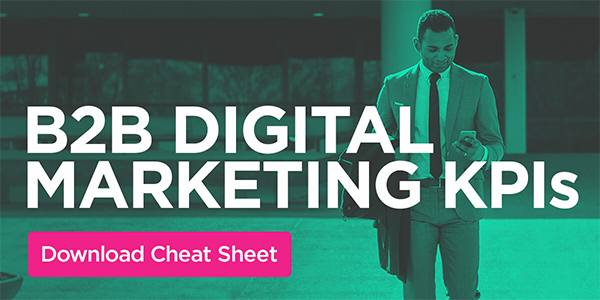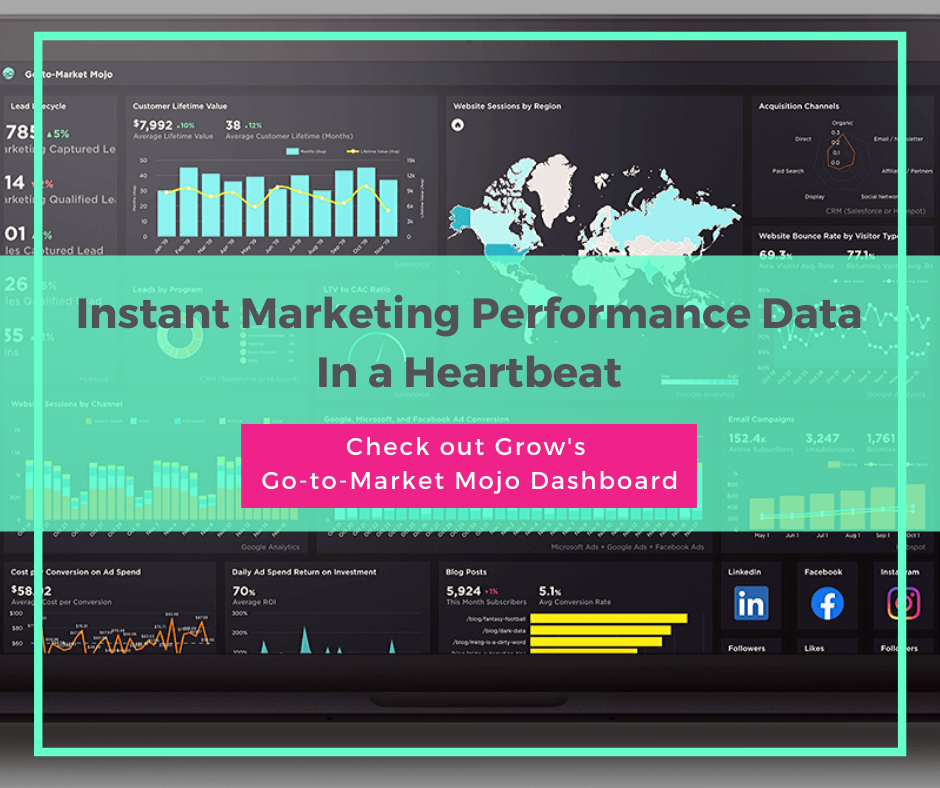To successfully complete a trip, you need two things: a destination and a map. First, you need to know where you want to go, then you need to know how to get there.
It’s the same with your digital marketing efforts: The very first thing you need is a goal. A goal is your destination – it’s where you want to end up. No matter what your goal – a 10% increase in sales, greater awareness, a new audience – you need a map to tell you if you’re on the right track. That’s where metrics come in. Your Key Performance Indicators (KPIs) tell you if you’re on a road that’s taking you to your destination.
When it comes to digital marketing, KPIs tell you what’s going right, what’s going wrong, what you need to change, and whether you’re on the best route to meeting your goals. There are dozens of metrics you can measure. The KPIs are the ones that you’ve chosen as being most relevant for measuring progress toward your goals. Here are some KPIs to measure (and some to ignore) for four major digital marketing channels.
Focus on these to refine your efforts, then share them out with your team and organization with a marketing dashboard.
PPC KPIs
Impressions – Impressions on their own tell you if your ad is being shown. They become a meaningful KPI in connection with two other metrics: clicks and the impressions your campaign was eligible for.
Clicks are also a meaningful metric on their own, but they become a KPI when you divide the number of clicks your ads receive by the impressions. That’s your click-through rate and it tells you how well your ad is performing with your target market. A high click-through rate means your ad is engaging people; it means people are paying attention.
Quality Score – Quality score is an indicator of the overall quality and relevance of your keywords and ads. Quality score takes into consideration expected CTR, relevance of a keyword to its ad group, landing page, user experience, and your historical ad performance. Rank in search engine results pages (SERP) is determined in an auction by multiplying your highest bid by your quality score. The higher your quality score, the lower your cost per click (CPC), and ultimately your cost per conversion/acquisition (CPA).
Conversion Rate – Conversion rate is measured by the number of conversions divided by the number of clicks, so a higher conversion rate = a better campaign. Conversions are one of the main goals of a PPC campaign, so conversion rate is an extremely important KPI.
Social Media KPIs
Likes – It’s easy to click “like,” so a like is not a strong indicator of the consumer’s interest in what you’re trying to sell. It’s the same with followers: It’s nice to have a lot of them, but they’re not particularly meaningful unless they’re your target audience. People who follow your page after visiting once may never visit again – which means they likely won’t buy from you. Think of it this way: Do you want 10,000 followers and 10 sales or 1,000 followers with 100 sales?
Clicks, comments and shares, and mentions (and length of video views) show more interest and intent on the part of the audience. It takes just a little bit of extra effort to share or comment than it does to like. Along with likes, clicks, comments and shares make up engagement, which is a far better KPI. Clicks without comments or shares, or comments and shares without clicks means your ad wasn’t compelling enough and you should look at making some changes to your posts, ads and messaging. When you have them all together, you have a high engagement rate. That shows you’re reaching the right people and they’re glad to see and engage with you.
With social media ads, as with pay per click (PPC), you want to pay attention to click through rate or CTR, cost per click or CPC and cost per mille or CPM, and cost per action or CPA.
After that you want to pay attention to reach, leads, and of course conversions. After all, that’s why you’re there in the first place.
Email KPIs
Opens – Email opens are awesome. But it’s what happens afterwards that’s more important:
- Did they click on a link within the email? The more unique clicks, the higher the CTR; the higher the CTR, the better the engagement; the better the engagement, the more the readers are interested in your brand or product.
- Did they complete an action such as signing up for a newsletter, filling out a lead form or making a purchase? Those are conversions, one of the most important KPIs of all.
- Did they share or forward the email? Fantastic. You’re on your way to growing your contact list! Email contact list growth is another important KPI to watch.
Bounces are emails that couldn’t be delivered. There are soft bounces (a valid address, but something like a full mailbox prevented delivery) and hard bounces (invalid or non-existent email address). A high percentage of hard bounces means it’s time to clean your email list and purge bad contacts. A healthy contact list is important for the overall success of your campaign and your delivery rate.
Website KPIs
Visitors, page views, and sessions are important metrics, but more important are unique visitors, the number of pages viewed per session and time spent on page. Unique visitors give you a better sense of how many different people are visiting your site, so when there are spikes in traffic, you can more accurately assess where they’re coming from. Pages viewed per session and time spent on page tell you how interesting visitors found your content – did they stick around, and did they go to other pages? If so, you know you’ve caught their interest.
If not, did they bounce off the page and site right away? A high bounce rate indicates visitors didn’t find what they wanted or expected. This could come from a disconnect with your keywords and ads, and your website content. If you have a high bounce rate, take a good look at the relevancy of all three to each other.
Top landing pages and exit pages show you where visitors are coming in and where they’re leaving your website. If they don’t bounce away, you can see how they progress through your site – what they found interesting and where their interest dropped off.
The Ultimate KPIs
Finally, as with everything else, leads and conversions in most cases are your most important KPIs. Whether you’re B2C, B2B, or B2G, that’s what it’s all about: raising awareness, finding qualified prospects and making sales. That’s where you want to go and KPIs can tell you if you’re going in the right direction.



.png)



